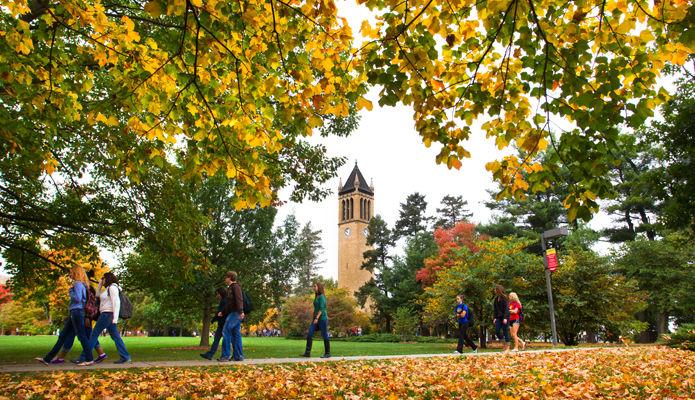University Museums celebrates Iowa State’s beauty
October 5, 2015
After celebrating its 40th anniversary, University Museums still has plenty to praise.
University Museums will host an on-campus walking tour at 2 p.m. Sunday at the Farm House Museum, celebrating the release of “Campus Beautiful: Shaping the Aesthetic Identity of Iowa State University.”
Campus Beautiful is an in-depth 480-page publication that showcases an illustrated overview of the campus layout from 1858 to present day.
The publication is available for purchase before and after the tour for $100, or $75 for current University Museums members.
According to the University Museums website, the book will provide “a comprehensive look at the development of Iowa State’s campus aesthetic design over the past 150 years.”
University Museums also revealed that Paula Mohr, architectural historian and one of the major essayists of the book, will lead the tour.
Beginning on the south porch of the Farm House Museum and continuing around Central Campus, Mohr will highlight why critics have named Iowa State University as one of the most beautiful campuses in the country.
“Iowa State University is a special place, one that is easy to fall under the spell of. [W]hen you walk around this beautiful campus, there is a story being told,” Warren Madden, ISU senior vice president for business and finance, wrote in an excerpt provided by the university.
The history of Iowa State, and the creation of Central Campus, stretches back to 1858, from 14 buildings and several farm houses to more than 160 buildings today.
Nancy Gebhart, educator of visual literacy and learning for University Museums, said the creation of Campus Beautiful is a founding ideal of Iowa State.
“It was a very strategic and very thoughtful decision from 1858 to make the Iowa State campus a beautiful campus in all different ways,” Gebhart said.
Gebhart said using various ways of incorporating art, architectural pieces and landscapes all contribute to Iowa State’s beautiful campus.
University Museums made it part of its mission to demonstrate that campus aesthetics was a planned decision, breaking through the boundaries of secluding higher learning.
“It’s why Central Campus even exist[s],” Gebhart said. “We need that recreational space and social space for college, so that the development of students isn’t just about their studies; it’s about the entire atmosphere that is created.”
After decades of calling the campus beautiful, it seems it was only right to document the history of Iowa State.
Whether you decide to read about it or take a walk in the October breeze, you can determine yourself what makes Iowa State a beautiful campus.







